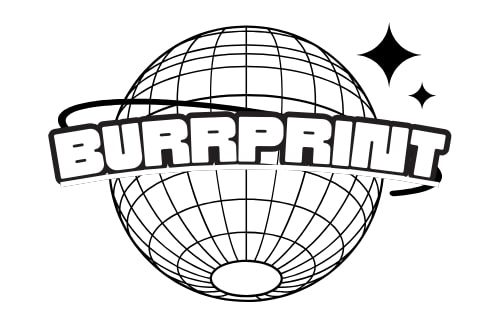Did you know that selecting the right paper stock for your print marketing materials can greatly impact how your brand is perceived by potential customers? From the texture to the weight, each element plays a vital role in conveying quality and professionalism. But that's just the beginning; there are several more factors to ponder when delving into the world of print marketing. Let's explore how these elements work together to create a successful print marketing campaign that resonates with your target audience and drives results.
Key Takeaways
- Understand your target audience to tailor messages effectively.
- Choose quality materials that align with your brand message.
- Design visually appealing collaterals for brand recognition.
- Incorporate branding elements strategically for maximum impact.
- Select the right printing technique based on your marketing goals.
Understanding Printing Marketing Basics
Curious about how printing marketing can elevate your business to new heights? Understanding your target audience is key to crafting effective print marketing materials. By tailoring your message to resonate with the specific demographics, interests, and needs of your target audience, you can increase engagement and drive conversions.
When considering your print budget, think about the most cost-effective ways to reach your desired customers. Printing materials in bulk can often reduce costs per unit, making it more economical to distribute to a larger audience. Additionally, exploring different printing options and materials can help you find the right balance between quality and affordability.
Choosing the Right Printing Materials
Selecting the appropriate printing materials for your marketing campaign is a strategic decision that can greatly impact the effectiveness of your message and the overall perception of your brand. When choosing your materials, consider the paper weight and finish to make certain they align with the message you want to convey. Opting for a heavier paper weight can give a sense of quality and durability, while the finish can range from glossy for a vibrant look to matte for a more sophisticated feel.
Consider the font style and size carefully as well. The right font can enhance readability and convey the personality of your brand. Make sure the size is legible both up close and at a distance. To help you visualize the importance of these choices, take a look at the table below:
| Printing Material | Best Use |
|---|---|
| Heavy paper weight | Brochures, business cards |
| Glossy finish | Flyers, promotional materials |
| Matte finish | Letterheads, envelopes |
Designing Effective Print Collaterals
Craft your print collaterals with the goal of making a visual impact and delivering a clear message. Use design elements that catch the eye and communicate your brand's essence effectively. By combining visual appeal with concise messaging, you can create print materials that leave a lasting impression on your target audience.
Visual Impact
To create print collaterals that captivate your audience, focus on the visual elements that make a lasting impact. Utilize visual storytelling techniques to convey your brand message effectively and enhance brand recognition. Graphic design plays a pivotal role in catching the eye of your audience and maintaining their engagement. When designing your print materials, consider colors, fonts, and imagery that align with your brand identity and resonate with your target demographic. A well-thought-out design not only makes your print collaterals aesthetically pleasing but also reinforces your brand image in the minds of your audience. Remember, the visuals are the first thing your audience notices, so make sure they are compelling and cohesive to leave a lasting impression.
Clear Messaging
For impactful print collaterals that resonate with your audience, make sure your messaging is clear, concise, and compelling. Crafting compelling and concise messaging is essential when designing print materials. Your message should be easy to understand at a glance, grabbing the reader's attention and leaving a lasting impression. When targeting specific demographics, tailor your language and tone to appeal directly to their needs and preferences. Use the table below as a guide to confirm your messaging is on point:
| Key Points | Action Steps |
|---|---|
| Identify your goal | Define the main message |
| Know your audience | Use language they relate to |
| Call to action | Make it clear and compelling |
Incorporating Branding Elements
Enhancing your print materials with strategic logo placement and a cohesive color palette can greatly elevate your brand presence. By integrating these branding elements, you not only reinforce brand recognition but also establish a consistent visual identity across all marketing materials. Let's explore how these subtle yet impactful details can leave a lasting impression on your target audience.
Logo Placement
Position your logo strategically to maximize brand visibility and recognition in your marketing materials. Consider the logo size carefully – it should be large enough to be noticed but not overpowering. A good rule of thumb is to guarantee that your logo is prominent without overshadowing other essential information on the material. When it comes to logo color, choose shades that complement your overall design scheme and evoke the right emotions in your target audience. Make sure the colors align with your brand identity to maintain consistency and strengthen brand recognition. By placing your logo thoughtfully in your print marketing materials, you can enhance brand recall and create a lasting impression on your audience.
Color Palette
Considering your brand's color palette when incorporating branding elements in your print marketing materials is crucial for creating a cohesive and impactful visual identity. Color psychology plays a significant role in evoking emotions and perceptions in your target audience. By aligning your color choices with your brand's values and personality, you can establish a strong connection with your customers. When selecting colors, also take printing techniques into account to guarantee the hues appear as intended. Stay updated on design trends to make sure your color palette remains relevant and appealing. Additionally, choose paper that complements your colors and enhances the overall look and feel of your print materials. By paying attention to these details, you can create visually stunning and effective print marketing campaigns.
Selecting the Best Printing Techniques
When selecting the best printing techniques for your marketing materials, take into account the impact on your target audience's perception and engagement. Offset printing and digital printing are two primary methods to contemplate. Offset printing offers high image quality and color accuracy, making it ideal for projects where details are important. This technique is cost-effective for large print runs, ensuring consistency across all copies. On the other hand, digital printing provides quick turnaround times and is perfect for short print runs or projects requiring personalization. It allows for variable data printing, making each piece unique to the recipient.
When deciding between offset and digital printing, think about your marketing goals. If you need high-quality prints for a mass distribution, offset printing might be the way to go. However, if you require fast and personalized prints, digital printing could better suit your needs. By selecting the right printing technique, you can enhance the visual appeal of your marketing materials and effectively communicate your message to your audience.
Ensuring Print Quality and Consistency
To guarantee your marketing materials leave a lasting impression, meticulous attention to print quality and consistency is essential in engaging your audience's attention and reinforcing your brand message. Achieving color accuracy and selecting the right paper are vital in making your prints visually appealing and professional. Consistency in branding ensures that your audience recognizes and remembers your company, while maintaining high image quality across all materials enhances credibility and trustworthiness.
| Print Quality | Importance |
|---|---|
| Color Accuracy | Ensures vibrant and true representation of your brand. |
| Paper Selection | Impacts the feel and perceived value of your materials. |
Implementing Distribution Strategies
For an effective marketing campaign that reaches your target audience and maximizes impact, strategic implementation of distribution strategies is paramount. Identifying your target audience is the first step in devising a successful distribution plan. Understanding their preferences, behaviors, and where they are most likely to engage with printed materials will help you choose the most effective distribution channels.
When selecting distribution channels, consider a mix of traditional and modern methods to guarantee thorough coverage. Utilize direct mail, door-to-door distribution, event handouts, and partnering with local businesses to reach specific geographic areas effectively. Simultaneously, explore digital distribution options such as email campaigns, social media promotions, and online advertisements to expand your reach and engage with a broader demographic.
Measuring Print Marketing Success
To effectively gauge the success of your print marketing efforts, implementing measurable metrics is vital in determining the impact and return on investment of your campaigns. Tracking metrics and analyzing data are essential steps in evaluating the effectiveness of your print marketing initiatives. By setting clear objectives and utilizing specific key performance indicators (KPIs), you can measure the performance of your campaigns accurately. Here is a table to help you identify and track the most important metrics for your print marketing success:
| Metric | Description | Importance |
|---|---|---|
| Conversion Rate | Percentage of recipients who take action | High |
| ROI | Return on Investment | Critical |
| Customer Acquisition | Number of new customers from the campaign | Essential |
| Engagement Metrics | Likes, shares, comments | Indicates audience interest |
| Cost per Acquisition | Cost of acquiring a new customer | Helps in budget planning |
Frequently Asked Questions
Can Printing Marketing Be Effective for Online Businesses?
Printing marketing can be highly effective for online businesses in driving online conversion rates. By integrating printed materials into your digital strategy, you can create a multi-channel approach that resonates with customers on different levels. Utilize print materials like flyers or direct mail to complement your online presence and increase brand visibility. This cohesive strategy can help boost customer engagement and loyalty, ultimately leading to improved online conversion rates for your business.
How Do You Handle Printing Marketing for Sensitive Industries?
When managing printing marketing for sensitive industries like healthcare, legal compliance and privacy concerns are paramount. Guarantee all materials adhere to industry regulations and protect sensitive data. Implement secure printing practices, collaborate closely with legal teams to review content, and consider using encrypted communication methods. By prioritizing confidentiality and following industry guidelines, you can effectively navigate the challenges of marketing in sensitive sectors while building trust with your audience.
What Are the Best Practices for Printing Marketing in Multiple Languages?
When marketing in multiple languages, it's essential to take into account cultural nuances. Utilize translation services to guarantee accurate messaging that resonates with diverse audiences. Tailoring content to different cultures can enhance engagement and lead to better results. By incorporating cultural considerations into your printing marketing strategy, you demonstrate respect and understanding for your target markets. This approach can help you connect more effectively with a wide range of potential customers, ultimately boosting your campaign's success.
Is It Possible to Integrate Augmented Reality With Print Materials?
Imagine the power of blending reality with digital magic in your print materials. Yes, you can achieve this marketing synergy by integrating augmented reality (AR) with your print materials. AR integration brings your print materials to life, engaging your audience in a whole new way. This innovative approach not only captivates but also drives interaction and boosts your marketing efforts to new heights. Exciting possibilities await with AR integration in print materials!
How Can QR Codes Be Effectively Utilized in Print Marketing Campaigns?
To effectively utilize QR codes in print marketing campaigns, consider QR code tracking for valuable data insights and customized designs for a personalized touch. By incorporating QR codes strategically, you can enhance engagement and track the success of your print materials. Through innovative design choices and targeted messaging, you can create a seamless experience that drives interaction and boosts campaign performance.
Conclusion
You've mastered the art of print marketing like a seasoned pro! Your strategic approach, attention to detail, and commitment to quality have catapulted your campaigns to new heights. Your print collaterals are not just pieces of paper, but powerful tools that captivate and convert with unparalleled finesse. Keep up the exceptional work, and watch your brand soar to unimaginable heights in the domain of print marketing!







